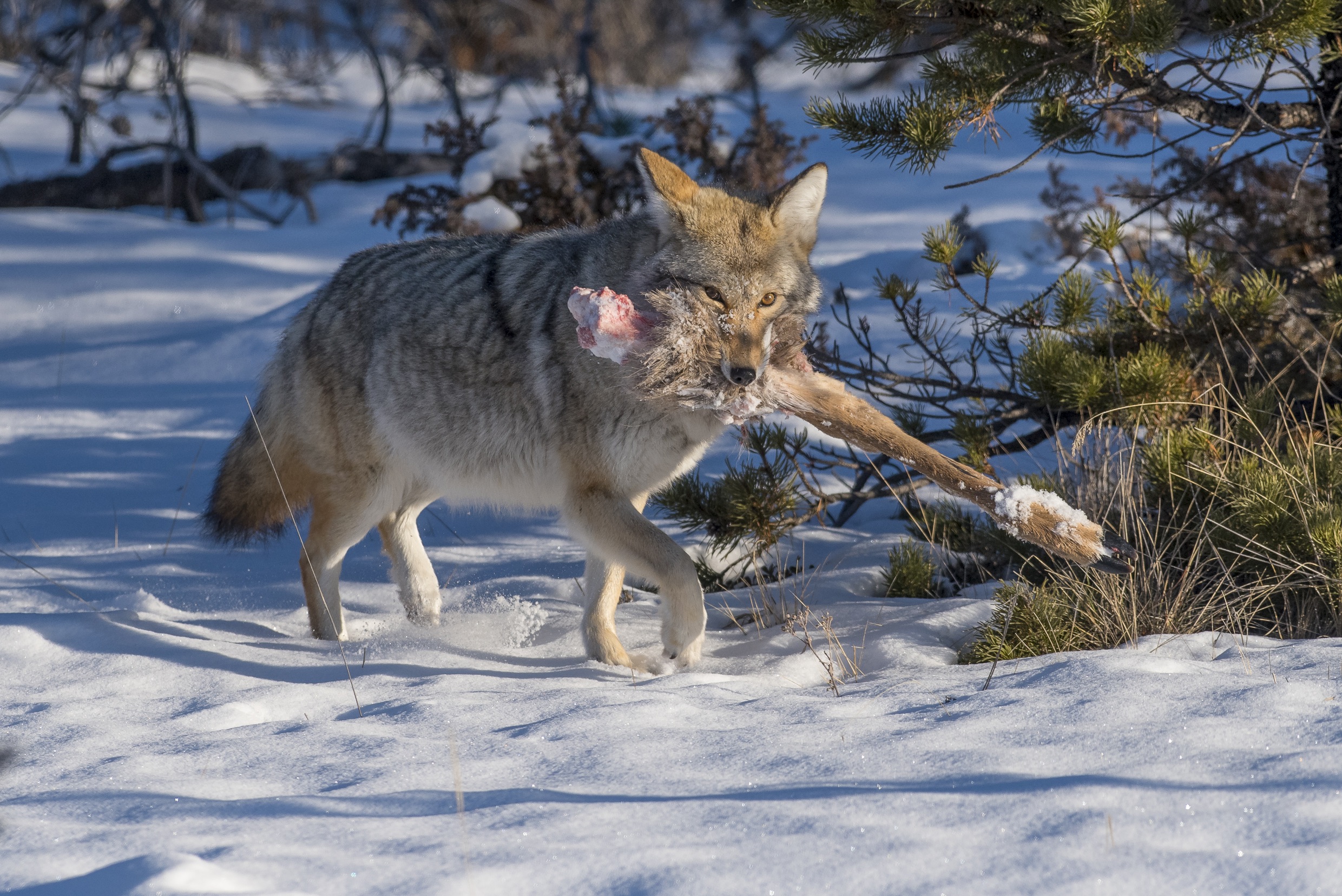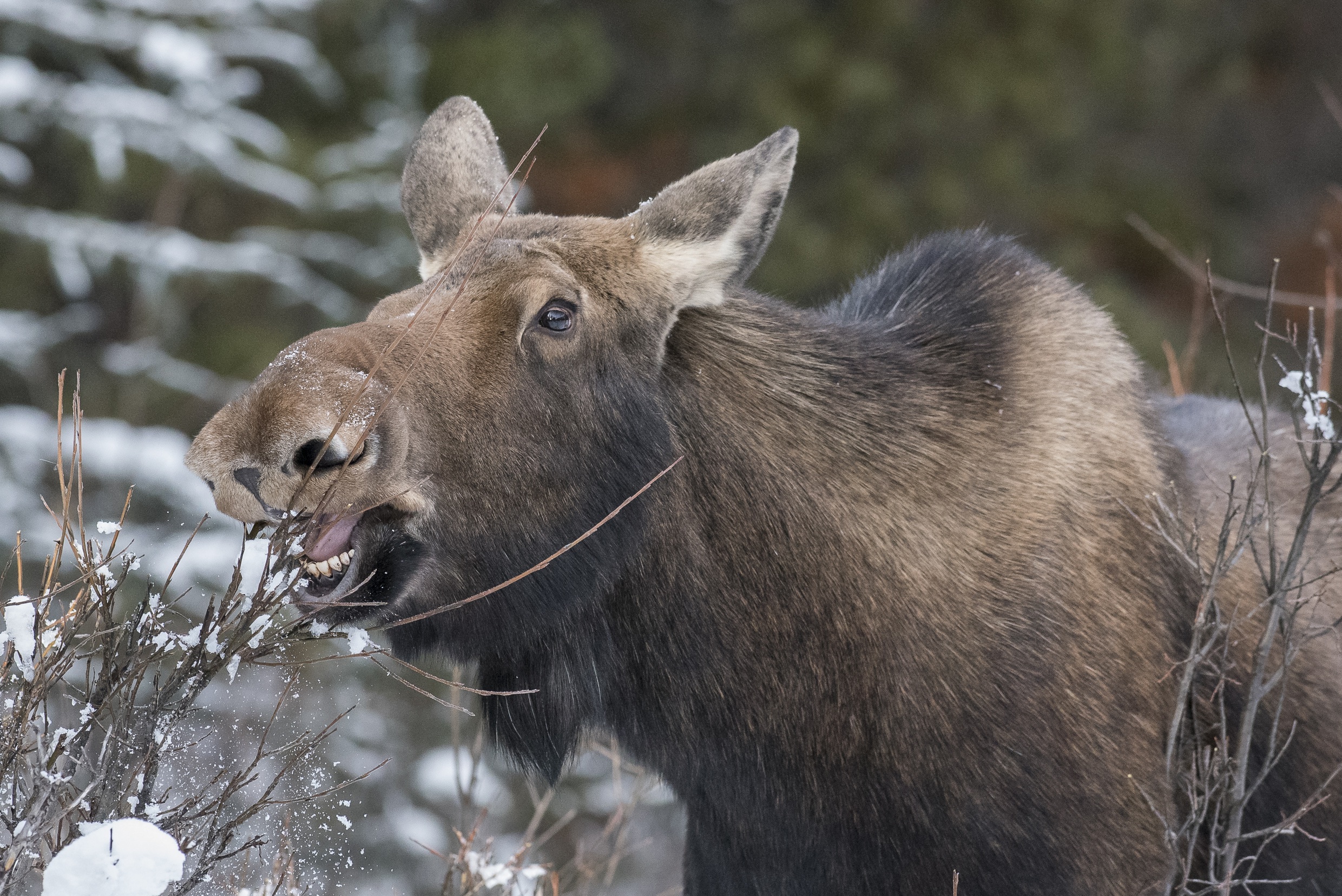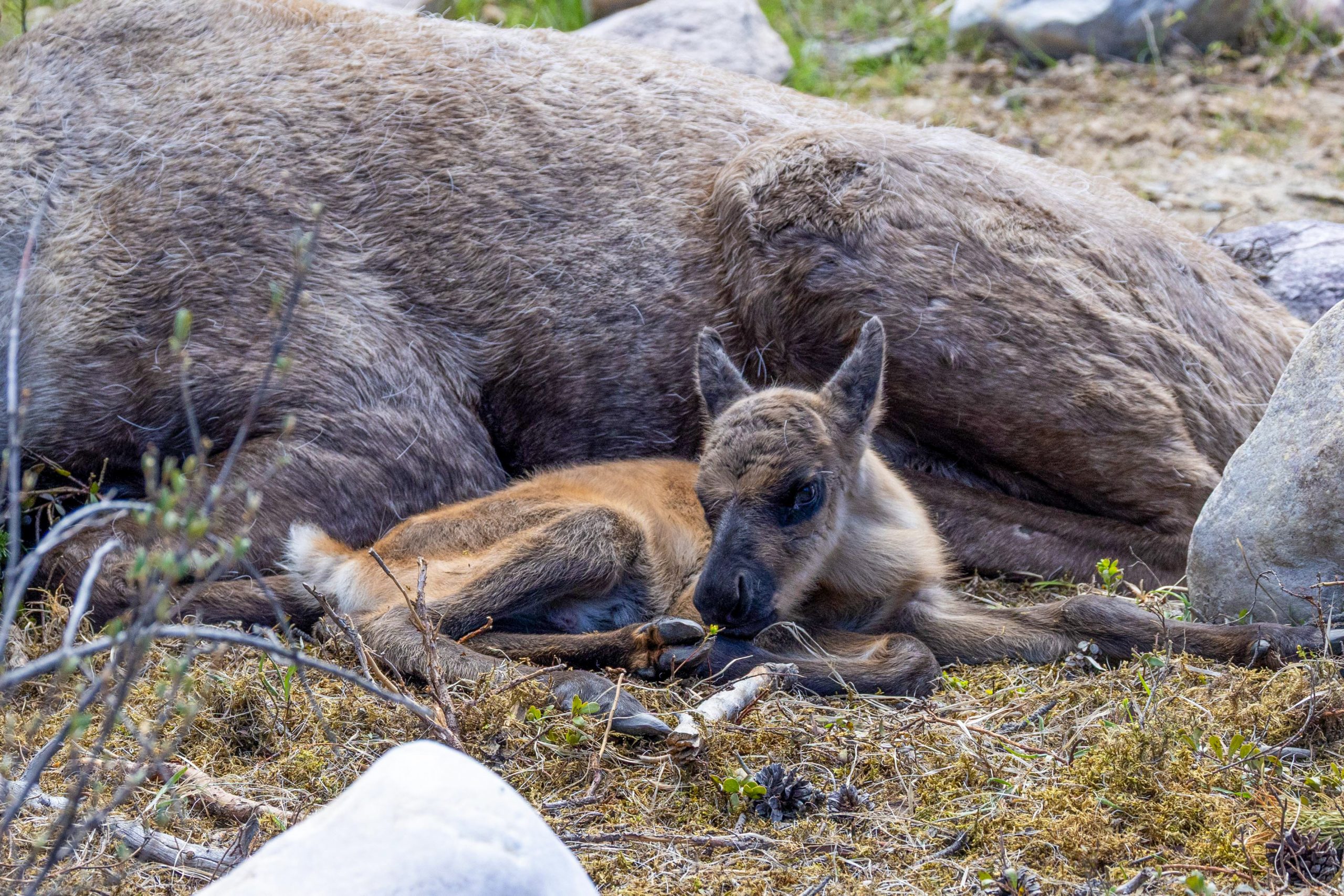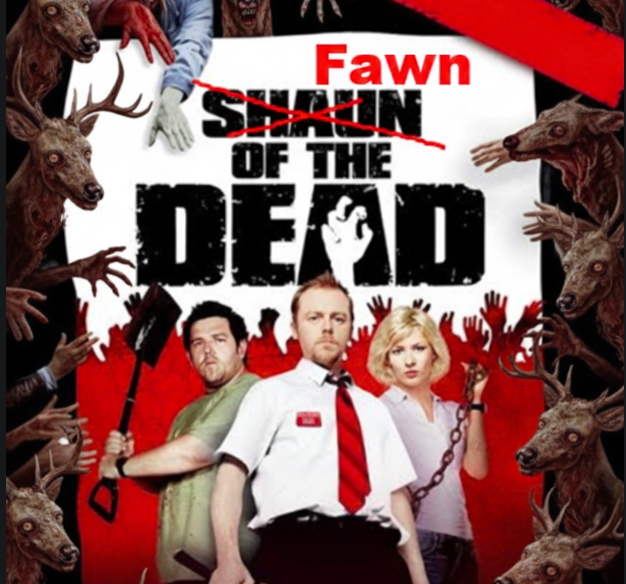Beware the ‘Fawn of the Dead’: a herd of skeletal, pock-marked deer limp menacingly towards their target, moaning, intent on a gory brain feast…grraaahhh!!!
OK, not really; there are no zombie deer eating anyone’s brains. So why is the disease known as Chronic Wasting Disease (CWD) also known as zombie deer disease?
Stagger on, dear reader, to find out.
One reason, is because of how immediate CWD can appear to take over its host, which can lose its fear of humans as it body rapidly wastes away. An infected deer can appear to be perfectly healthy for up to two years before succumbing to the disease in a matter of months.
Prairie problems
Another reason, perhaps, is because of how CWD has marched across the prairies. The current CWD epidemic appears to have started in Saskatchewan and, like a horde of lurching zombies, is heading west—the first case in British Columbia was recorded in 2024. Jasper, so far, has been spared from the scourge—but that may only by a temporary reprieve. Jasper National Park is working on a CWD response plan, and scientists in both the national park and the province of Alberta are testing the brain stems of road-killed deer for CWD. I’m curious if those biologists are horror movie buffs … Night of the Living Dead fans will remember that the only way to kill a zombie is to sever the head!
Now, don’t worry. Zombie deer can’t infect people; no human has ever contracted CWD. But CWD is one of several fatal neurodegenerative disorders—like mad cow disease, in cattle—which are caused by a change in the 3D shape of particular proteins.
Troubling tremors
When an animal develops some of these deformed proteins, they may have difficulty moving. Then they may exhibit fatigue. Often they’ll be observed lowering their head, experiencing tremors and exhibiting repetitive movements. They can also lose their fear of humans. That all sounds pretty zombie-like, I’d say. Eventually, the animal will start losing weight (that’s the ‘wasting’ part of CWD). Death inevitably follows these symptoms, usually within months.

Macabre motivation
The most famous relative of CWD is the aforementioned mad cow disease, which can infect humans. The spread of mad cow in the United Kingdom was linked to feeding cattle meat and bonemeal. This since-prohibited practice involved adding the slaughterhouse floor scrapings (including brains!) to cattle feed—a grisly way to improve bovine growth. I suppose I have to admit brain eating can factor in to the spread of these protein diseases.
When the use of meat and bonemeal in feed was banned in 1984, mad cow disease declined, and is now is now very rare.


Caution with caribou
Of course the most worrying part of CWD is how it can be transmitted to other deer, and other members of the deer family, like elk, moose and possibly caribou—as if they don’t have enough problems already!
For Jasper, CWD represents a potential threat to our endangered caribou and while there has never been a recorded case of CWD in caribou, there’s reason to be cautious. The lack of cases may simply be due to caribou’s remote nature—their strategy is essentially to “live away” from deer, as discussed in a previous Jasper Local piece. And because CWD is transmitted through saliva, urine and feces, the caribou in Jasper’s new captive breeding facility will be safe from infection, because the double-fencing will keep any deer (infected or otherwise) away from the caribou.

Alberta’s disadvantage
Alberta’s caribou are a different story, however, and researchers are hitting the CWD issue hard on many fronts: gene therapy, drugs, and advances in early detection so they can discover answers for the long term.
To reduce the spread of the disease, CWD control in Alberta focusses on culling sick animals on game farms and reducing wild deer numbers (both sick and healthy). Game farmers must submit the brains of dead elk or deer to monitor for CWD. Due to the high density of animals, CWD can spread rapidly through a farm—game farming is thought to be a major culprit in the current North American epidemic.
Just like it can’t be transmitted to humans, CWD doesn’t spread to the animals’ predators, like coyotes or wolves. So support the scientific pursuit of a cure for CWD, and rest assured that neither you, nor your pet dog can catch it—you don’t have to worry about becoming an extra in a real-life zombie movie!

Mark Bradley // info@thejasperlocal.com


